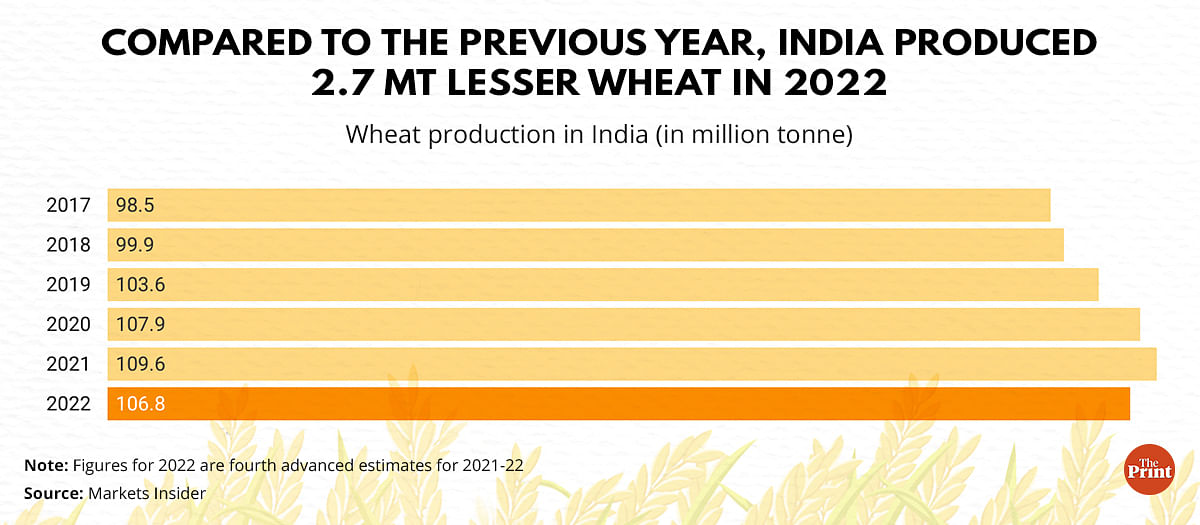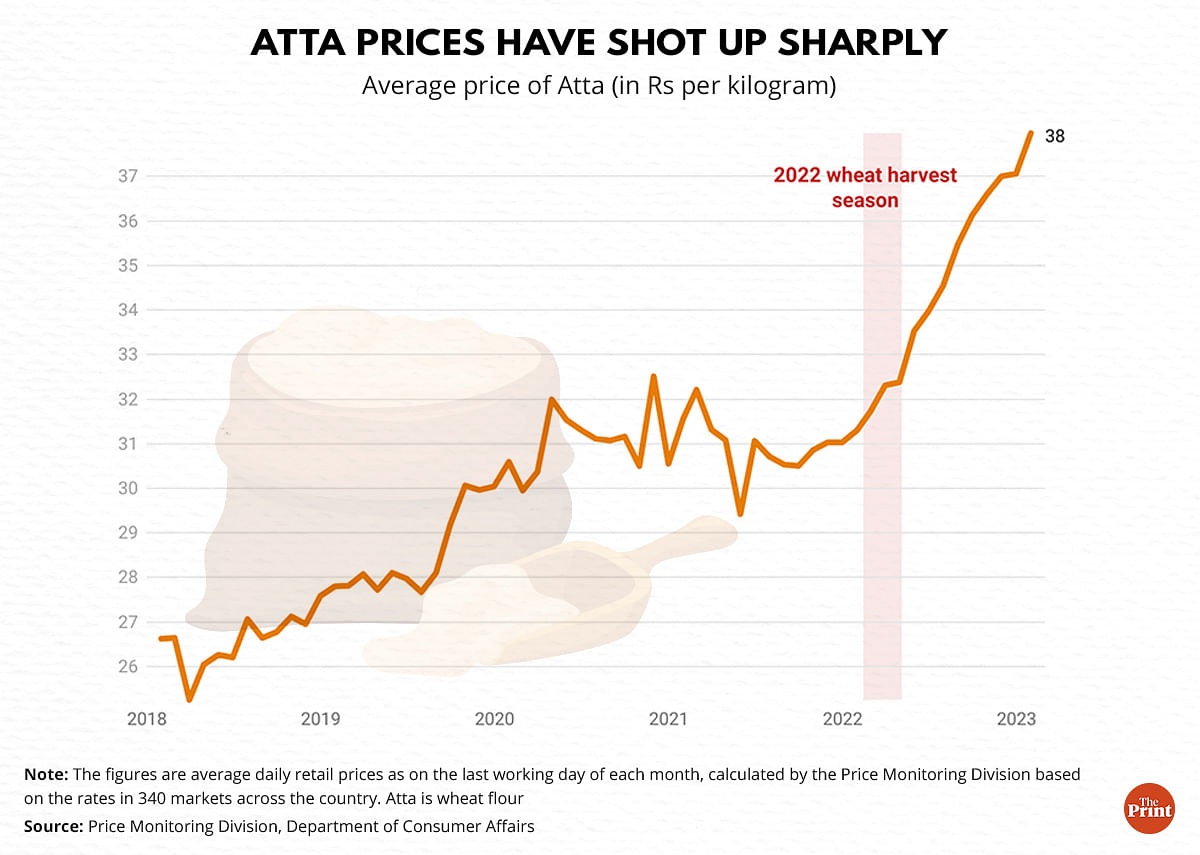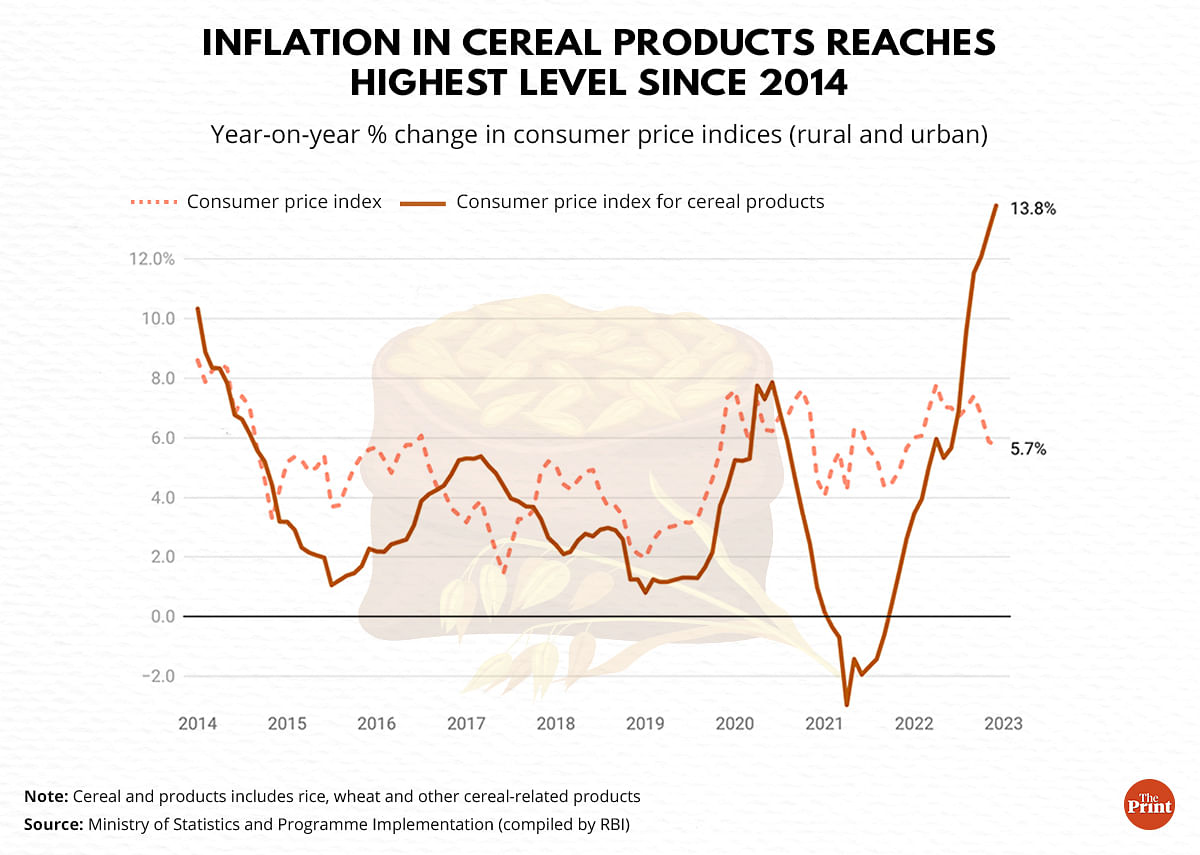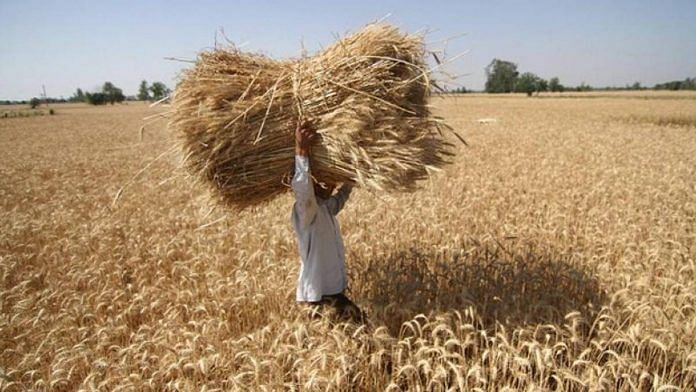New Delhi: In 2022, India was expecting to reap a bumper harvest of wheat. An unprecedented heat wave derailed its plan, and the situation was exacerbated by a global wheat shortage owing to the Russia-Ukraine war.
While the country was looking to harvest 110 million tonne (MT) of wheat, the fourth advanced estimates, released in August 2022, peg the production at 106.84 MT — 2.5 per cent lower than the preceding year’s 109.59 MT.

Consequently, the prices of wheat have been rising and have almost reached record highs, data analysed by ThePrint shows.
Also Read: Punjab, Haryana can hedge India against climate-induced food shortages. See data
Wheat prices soar
The Department of Consumer Affairs, under the Ministry of Consumer Affairs, maintains daily price data of 22 essential commodities across 340 markets.
ThePrint looked at the average retail price of wheat, or Atta on every last working day of each month since 2018. What the data shows is that the bulk of the price rise happened after the harvest period (March to mid-May) in 2022.
By January 31 this year, wheat prices averaged about Rs 38 per kg, which is almost 21 per cent higher than last year’s prices around the same time — Rs 31 per kg.
This means that on average, Atta prices have gone up by Rs 7 per kg in just one year. This is significantly sharp, considering the fact that it took almost four years for the prices to rise by Rs 5 per kg since 2018.

In January 2018, the retail price of Atta was Rs 26.62 per kg and, with little ups and downs, it reached Rs 31.3 per kg by the end of January 2022.
Above-average inflation
Every month, the Ministry of Statistics and Programme Implementation releases Consumer Price Indices (CPI), which measures the changes over time in general level of retail prices of selected goods and services.
Atta comes under the consumption basket of cereal and its products. While the inflation in cereal products was already rising after Covid receded in 2021, the situation worsened in 2022.
In December 2021, cereal products had witnessed a price rise of 2.6 per cent annually and they were up by 13.79 per cent a year later.

What’s more concerning, though, is that while India is gaining marginal control over the inflation situation, this isn’t happening in cereals.
The overall CPI inflation reached its peak in September 2022 at 7.4 per cent and has gradually come down since then to reach 5.72 per cent in December 2022. At the same time, the inflation rate in cereal products has gone up from 11.53 per cent to 13.79 per cent from September to December 2022.
The detailed breakup for commodities is available since January 2014, which makes the cereal inflation rate of December 2022 the highest in at least nine years.
Open market operations the key
The Food Corporation of India, the apex agency procuring foodgrain in the country, usually maintains an additional reserve of wheat and rice in order to provide for food security. Some stock is reserved for open market sale schemes, through which FCI manages to contain prices.
Experts are of the view that the government must release its strategic reserve in the open market to enhance supply.
“The Centre needs to unload 30 lakh tonne of wheat in the open market during February-March,” Ashok Gulati, agricultural economist and Infosys Chair Professor for Agriculture at the Indian Council for Research on International Economic Relations, told ThePrint.
The Centre announced last week that it would sell 30 lakh tonnes of wheat in the open market, a move which flour mill federations have welcomed.
Former agriculture secretary Siraj Hussain said “prices are likely to go down as the wheat harvest season (March to mid-May 2023) approaches”. The government is now eyeing a bumper wheat harvest of 112 MT in 2022-23 crop year (July to June), most of which will be done from March till early May.
(Edited by Nida Fatima Siddiqui)
Also Read: Modi govt has 2 goals to rescue India from another wheat crisis. Export ban should go next



